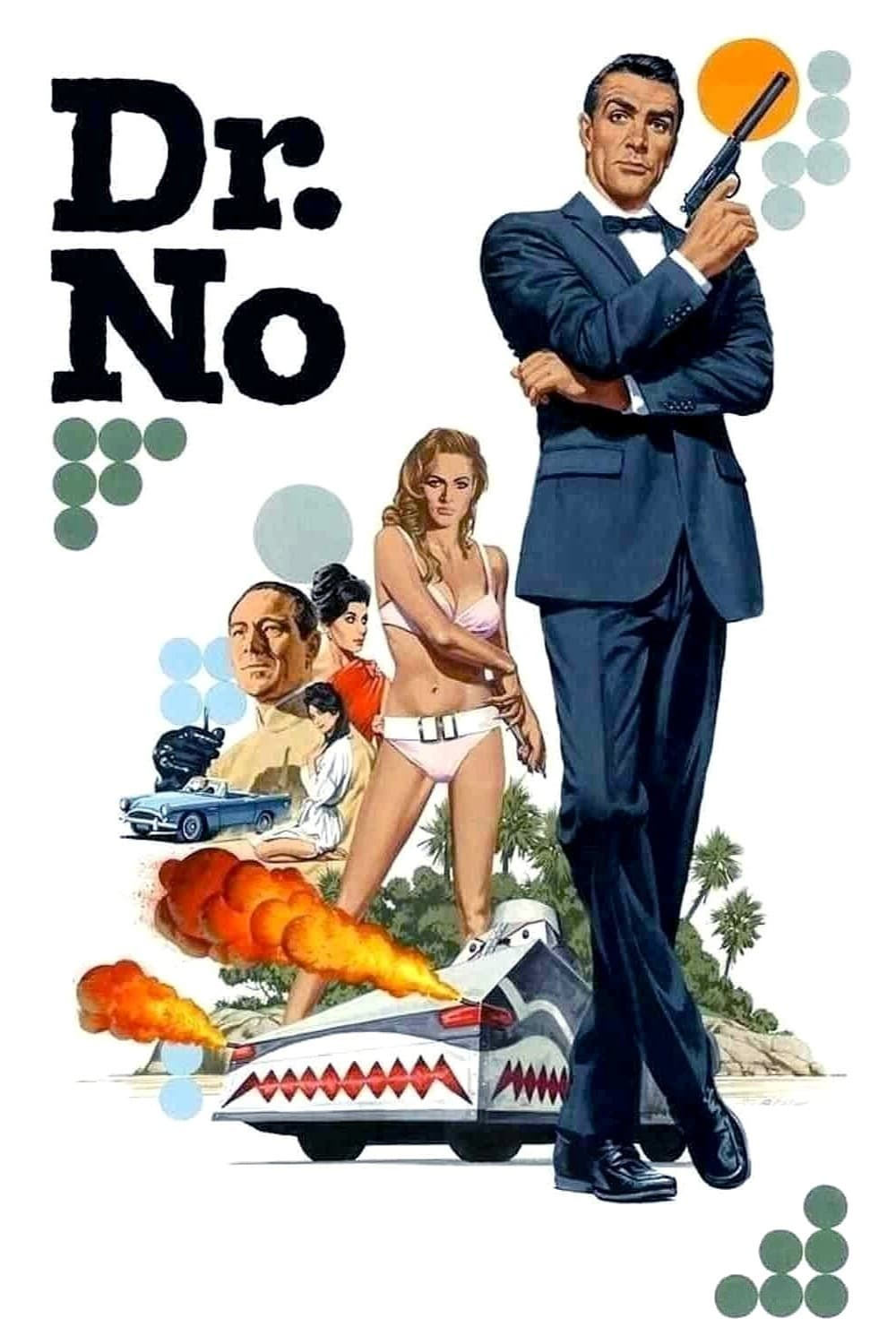Published on
The early years of the James Bond franchise were nothing short of extraordinary, not just for the sheer impact of the films but for the remarkable speed at which they were produced. Between 1962 and 1965, the series churned out four blockbuster entries, culminating in “Thunderball.” This fourth installment, arriving just a year after “Goldfinger“, showcases a level of relentless production that feels almost unimaginable today—especially for films of such grand ambition and scale.
When SPECTRE steals two nuclear warheads and holds the world hostage, Bond is sent to the Bahamas to track down the mastermind, Emilio Largo. With the help of Domino, Largo’s mistress who harbors her own reasons for revenge, Bond dives into a deadly underwater battle to recover the warheads. As tensions escalate, Bond faces danger from all sides, navigating treacherous waters to prevent SPECTRE from carrying out its devastating threats.
“Thunderball” takes the James Bond formula perfected in “Goldfinger” and applies it to a story that hits many of the same beats. There’s the thrilling cold open, the psychedelic title sequence with Tom Jones belting out “Thunderball” alongside a powerful horn section, the gadgets, exotic locales, beautiful women, and a villain orchestrating an elaborate scheme that only Bond can thwart. All the ingredients for another smash hit are there, but unfortunately, “Thunderball” falls short of fully capitalizing on this winning template.
“Thunderball” marks a step down in the James Bond series, delivering only on a basic level. The film’s biggest flaw lies in its heavy reliance on a novelty that has long since lost its charm: underwater filming. While these scenes were groundbreaking and awe-inspiring for audiences in 1965, they now feel overly familiar. Worse, the numerous underwater sequences are drawn out and lack the excitement expected in a Bond film, creating a sluggish pace in what should be a high-octane action movie.
While most of the action scenes in “Thunderball” have a somewhat dated feel—the opening fight, for instance, would be choreographed and edited very differently today—it’s the underwater sequences that have aged the worst. Not because they’re poorly executed, but because they so obviously function as a gimmick to sell the movie. They feel shoehorned in, much like how 3D was often the weakest aspect of many 1980s 3D films.
The plot of “Thunderball” doesn’t do the film any favors either and would later inspire the ultimate Bond parody: “Austin Powers: International Man of Mystery”. The villain, Emilio Largo, is fairly dull—his only distinguishing feature being an eye patch. His plan involves stealing two nuclear missiles from a NATO aircraft and threatening to detonate them unless SPECTRE receives £100 million in diamonds. While the scheme is outlandish, it fits the over-the-top nature of a Bond movie, even with its convoluted execution, including replacing the pilot with a doppelgänger.
What stretches credibility, even for a Bond film, is how 007 gets involved. By sheer coincidence, the villains stash the pilot’s body at the same spa where Bond happens to be staying. Of all the places in the world, what are the odds? It’s a contrivance that’s hard to overlook, even in a franchise built on improbable scenarios.
Unlike the previous three films, the supporting cast in “Thunderball” fails to leave much of an impression. Adolfo Celi’s Emilio Largo lacks the enigmatic presence of Gert Fröbe’s Goldfinger and is far from a compelling villain. Adding to the disappointment, Largo’s henchmen are equally forgettable. His primary subordinate, Vargas, has no notable gimmicks or unique skills to set him apart. We’re simply told he doesn’t drink, smoke, or make love—hardly the stuff of iconic Bond henchmen. As a result, Vargas comes across as bland and uninspired, leaving the film without a truly memorable antagonist to elevate the stakes.
The Bond girls in “Thunderball” stand out more than the supporting male villains, with Domino (Claudine Auger) being one of the more memorable Bond women. Her character is layered, grappling with the discovery that Largo killed her brother, a fact she remains unaware of for much of the film. On the other hand, Fiona (Luciana Paluzzi) is a skilled and confident henchwoman, though her demise feels disproportionately silly considering her otherwise capable nature.
Fiona has also gained pop culture fame for a humorous moment that turned into a meme, where Connery hands her only her slippers while she’s in the bathtub and asks for something to put on.
However, one issue with the Bond girls in “Thunderball” is their visual similarity. Both Domino and Fiona are redheads, making it easy to confuse them. This is exacerbated by the fact that when Domino’s hair is wet, it appears darker, almost brunette. In scenes where her hair is dry, I found myself relying on the mole on her chin to differentiate her. It’s a small but noticeable flaw in the film’s visual storytelling.
As with any movie now 60 years old, certain aspects of “Thunderball” have not aged particularly well. In my review of “Goldfinger“, I highlighted how Bond essentially rapes Pussy Galore, coercing her from a suggested lesbian to a heterosexual woman—a problematic trope, to say the least. “Thunderball” doesn’t steer clear of similar issues, as James Bond blackmails a woman at the spa into sleeping with him, an act that feels deeply uncomfortable by today’s standards.
Additionally, the film crosses another ethical line by featuring actual sharks being killed during production. This would never fly today, as modern filmmaking adheres to strict standards to ensure no animals are harmed during production. These moments are stark reminders of how far cultural norms and ethical standards have evolved since “Thunderball” first hit theaters.
Despite its flaws, “Thunderball” remains a fairly entertaining Bond film and is far from the worst entry in the series. However, following the high points of “From Russia with Love” and “Goldfinger“, it undeniably feels like a step down. For the first time, the franchise starts to feel formulaic, relying heavily on tropes that, while enjoyable, lack the freshness and finesse of its predecessors.







